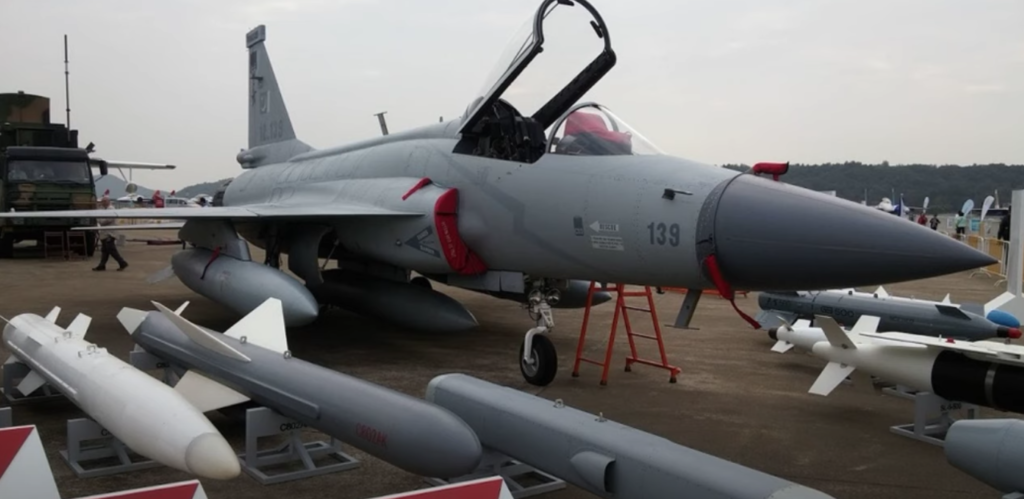
Pakistan’s defence posture is mainly aimed at securing itself against the threats emanating from its arch-rival India. Over the years, it has made efforts to counter these threats by acquiring or developing systems to enhance its defensive capability. Resultantly, a strategic balance has existed in South Asia for over four decades. Pakistan was forced to develop nuclear weapons after the Indian nuclear tests in 1974. The case of ballistic missiles in the region is similar to this. India has already developed supersonic Brahmos missile and is now aspiring to develop hypersonic technologies. When developed, these would pose a direct threat to Pakistan’s security. Hypersonic technologies, being new and expensive, are challenging and may take a long time for Pakistan to develop or acquire. However, an air-launched ballistic missile (ALBM) system could be an option for Pakistan in the near term.
Hypersonic Technologies
Major powers like the US, Russia, and China are rushing to develop hypersonic cruise missiles (HCMs) and glide vehicles (HGVs) due to their enhanced ability to penetrate missile defences through speed and manoeuvrability. While hypersonic cruise missiles use scramjet engine technology, the glide vehicles follow an unpowered fight after they are ascended into the atmosphere, between 30-50km altitudes, through a ballistic missile. Both these technologies are being developed by major powers at present, something other nations may take years to master.
The motivation behind hypersonic weapons development is the layer of ballistic missile defences that the US is developing and deploying. Therefore, to penetrate those defences, speedy and manoeuvrable weapon systems are being developed. Furthermore, these new weapons give an added benefit of carrying out a comprehensive pre-emptive strike against the adversary.
ALBM for Pakistan to Counter Indian Threats?
In the South Asian context, India will soon be able to deploy ballistic missile defence (BMD) systems against Pakistan. Theoretically, Pakistan should develop new kinds of systems to penetrate these defences. But it is India that is engaged in the development of hypersonic technologies. Pakistan, on the other hand, is not known to have any hypersonic Research & Development (R&D) program. It has a declared policy of not engaging in an arms race in South Asia and does not wish to spend limited resources on these weapons.
However, after India develops hypersonic weapons, Pakistan will be forced to counter them to maintain strategic balance and stability in the region. It can develop similar technologies for deterrence purposes as a first step and some defensive measures against them as the second step. But one near term solution, as mentioned before, can be found in an air-launched ballistic missile similar to the Russian Kinzhal and the Chinese CH-AS-X-13 missile.
ALBM is not a new concept, the system is from the Cold War era when first developed by the US during the 1960s. However, focused shifted to sea-launched ballistic missiles (SLBM). Today, the US, Russia, China, and Israel are developing or have developed ALBMs.
ALBM Role in Pakistan’s Defence
The ALBM is a near term option and can contribute to Pakistan’s defence preparedness with its numerous features as discussed below.
Stand-off capabilities: TheALBM like any other missile can carry both conventional and nuclear warheads. It will enhance the conventional capabilities of Pakistan and give the Pakistan Air Force flexibility against the Indian advantage of their S-400 air defence system. With an ALBM, highly defended strikes on time-sensitive targets like air defence systems and mobile missile launchers can be conducted from stand-off ranges effectively. It can also be used to strike enemy ships. Pakistan has already acquired CM-400AKG from China which is an air launched quasi ballistic missile used as an anti-ship weapon on the JF-17 jet.
Promptness: ALBM can have many features similar to HCMs or HGVs. The velocity of this missile can give a simple hypersonic strike option; in particular, it is faster than the sub-sonic air-launched cruise missiles (ALCM), Babur and Ra’ad. It can also penetrate the enemy’s defences by limiting the time between its detection and impact on the target. A short reaction time will be complemented by the lack of clarity about the intended mission of the aircraft. It will be difficult for the adversary to determine exactly the kind of weapons the aircraft is carrying and its intended target.
Extended Range: The second benefit of the ALBM would be range. The range of the aircraft will complement the range of the missile. For example, if the range of the missile is 1000km and the range of aircraft is 2000km, then their combined range of 3000km can give more strike options. Highly defended areas can, therefore, be targeted from a safe range.
Mobility: It gives the mobility to strike. An aircraft is a more mobile platform than the ground-based launchers. Due to this mobility, it can put mobile targets at risk. It can even defeat the enemy’s air defence systems, like the S-400 in India, by striking from an undefined angle. The ALBM can also be effective against the Indian Cold Start Doctrine. Pakistan can launch these missiles on invading Indian Integrated Battle Groups and destroy them.
Survivability: The mobility of the aircraft adds to its survivability. An aircraft can be loaded with the missile and dispersed and concealed on multiple bases. The missile can also be detected but interception will be difficult due to its hypersonic speed.
Less Challenging Effort than developing HGVs and HCMs
The development of an ALBM will be less challenging for Pakistan as compared to HGVs or HCMs. It will not require starting work from scratch. Pakistan already has short and medium-range ground-launched ballistic missiles. For example, Ghaznvi has a range of 290 km with an 8-meter length. These can be modified into air-launched missiles. China, for example, is modifying its ground-launched medium-range DF-21 ballistic missiles into CH-AS-X-13 ALBM. Similarly, the Russian Kinzhal missile is a reportedly modified version of the ground-launched short-range Sikander-M ballistic missile. The Israeli Rampage ALBM is a tactical precision missile with a length of 4.7 meters carried by Israeli F-16I aircraft.
Pakistan will, however, have to work on compatibility issues of the missiles with the aircraft such as the weight and length of the missile with the capacity or capability of the aircraft.




Be the first to comment